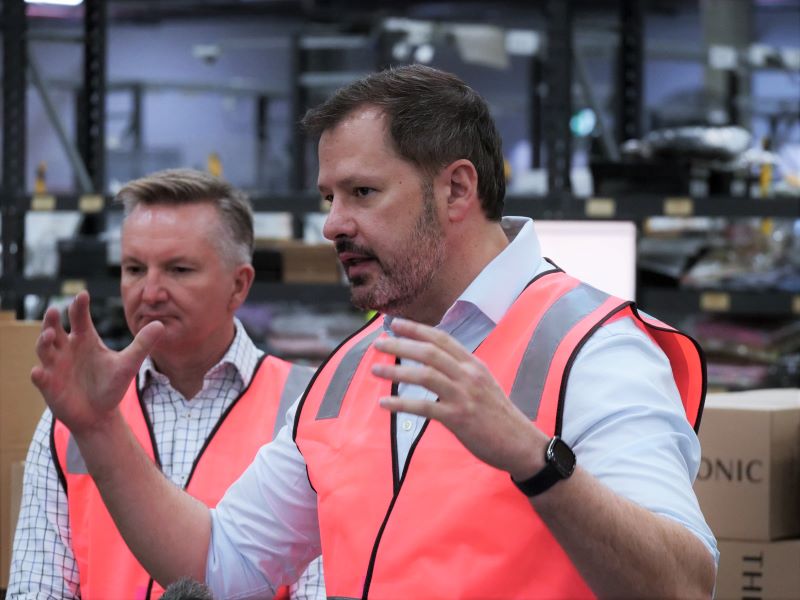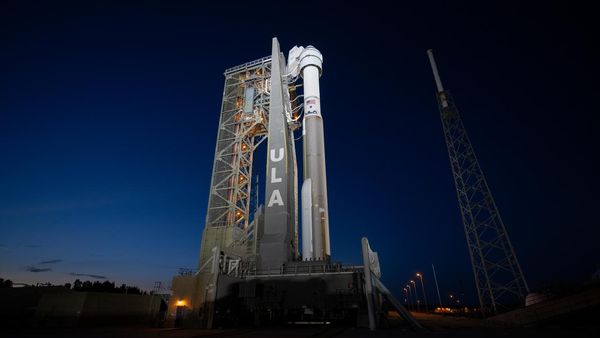Australia’s upcoming national robotics strategy must look to turn the promising but fledgling industry into a $50 billion automation juggernaut by the end of the decade, the industry’s peak body says, urging the Albanese government to start building homegrown talent, IP and robotics unicorns now.
The Robotics Australia Group – which developed the industry’s own roadmaps before Industry minister Ed Husic opted for a national plan – wants the new automation tilt to incorporate AI and establish it as a “key” Australian industry.
It recommends ambitious targets, including that a sovereign robotics and AI industry to be worth $25 billion by 2026, and $50 billion by 2030.
This would be much larger than the $2.2 billion forecast for quantum by 2030 – the other critical technology to receive funding in last week’s federal Budget and which also has a national plan.

The Robotics Australia Group submission to the strategy consultation said the responsible use of robotics can boost productivity and quality of live, and urges Australia to act now to manage the “inevitable” change.
“The National Robotics Strategy is our opportunity to build the foundations that will allow robots in Australia to unlock human potential, diversify and modernise our economy, develop long-term environmental sustainability, and deliver equitable health and well-being outcomes for all Australians,” the submission states.
To develop the national capability the strategy is targeting, the group called for the ambitious $50 billion mark, along with others for robotics targets for the current decade.
These include venture capital investments in robotics and AI worth $5 billion per annum by 2025, the number of ‘pure play’ robotics companies rising to 1000 by 2027, and the value of robotics exports jumping 30 per cent by 2030.
Australia should also aim to have at least one robotics unicorn – a company with a value of over $1 billion – by 2025, and eight by 2032, with even more ambitious targets for AI unicorns.
A much larger robotics industry with high value and high growth local companies would be a significant turnaround for Australia, where, despite a history of research excellence, the current Australian robotics industry is mostly small to medium organisations “meeting niche market needs”.
The nation’s robot population density – a measure of the number of industrial robots per 10,000 employees, is 75, while the world average is 113.
The turnaround should start with dedicated AI and robotics research funding, a robotics venture factory to build infrastructure and reviews of supply chains and government procurement protocols, the submission said.
But the key issue is access to capital for the complex, deep tech robotics and AI companies.
“Because of their complex nature (hardware, software, human interaction etc), robotics startups need a longer runway of investment before being able to become profitable,” the submission said.
The government should consider tax incentives, shared ownership schemes, including government equity, and support to train more personnel, according to the industry group.
The Robotics Australia Group is founded and led by Dr Sue Keay, who is part of the National Robotics Strategy Advisory Committee assembled by Minister Husic and led by CSIRO chief scientist Professor Bronwyn Fox.
According to the AI Group’s submission to the strategy, there is “considerable room for growth” in Australia’s robotics industry.
The employer group is pushing for forthcoming robotics strategy to be part of a wider plan for Industry 4.0.
“Robotics adoption ‘makes sense’ when it is embedded in a broader set of digital-driven industrial managements practices. To improve the uptake of robotics technology by the one-in-three businesses currently exploring it, policy needs to target the broader adoption of Industry 4.0 practices,” the submission said.
The AI Group wants any robotics plan to come alongside policy that encourages investment in R&D — including both robotics development and end users — and limits regulations that might be a barrier to investment.
It also recommended an expansion of the apprenticeship system to include higher qualification levels and a more flexible education and training system that encourages lifelong learning with micro-credentials to help build the skills of a more advanced workforce.
The Campaign for AI Safety, a volunteer run organisation launched last month calling for a pause on the development of AI capabilities, said robotics would also bring trade-offs.
While responsible use is a key pillar of the upcoming robotics plan, high risk sectors like defence, science and healthcare are also a focus.
“The Australian Government should consider limits on the use of AI in the applications and industries set out in the discussion paper until proven to be safe and/or the establishment of necessary safety standards and protocols,” the Campaign for AI Safety submission said.
It calls for a wait and see approach for the robotics strategy, which is already behind schedule, because the looming regulation of automation technologies in major foreign markets. It also recommends any industry assistance for robotics also include research on responsible use and equity concerns like job losses.







